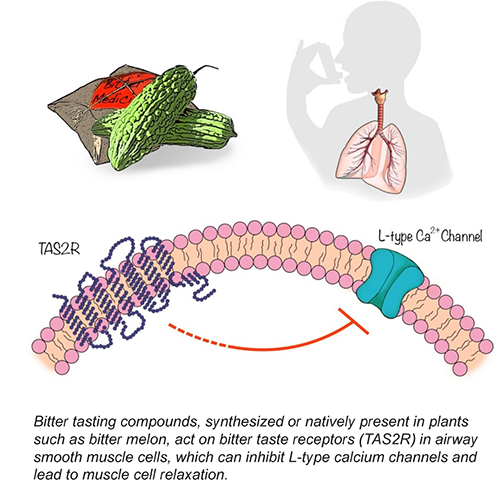Bitter taste receptors (TAS2Rs) in extra-oral tissues
Bitter taste, one of five basic taste qualities, guides organisms to avoid harmful toxins and noxious substances and is critical to animal and human survival. It has long been thought that bitter taste receptors in the specialized epithelial cells in the tongue's taste buds detect bitter tastants and initiate the sensation of bitterness. We recently discovered that bitter taste receptors are expressed in the airway and uterine smooth muscle, and bitter tastants can relax these muscles more completely than currently used bronchodilators or tocolytics (Zhang et al., 2012; Zheng et al., 2017). We further uncovered that G protein gustducin’s βγ subunits play a critical role in mediating airway relaxation induced by bitter tastants (Zhang et al., 2013). Our work raises the possibility that the evolution of TAS2Rs may also be driven by the selection pressure on bitter tastant-induced physiological functions in the extraoral tissues/organs. We are continually working to understand the molecular mechanisms by which bitter tastants relax uterine and airway smooth muscle. All living organisms (bacteria, plants, and animals) produce bitter tastants, and many current drugs taste bitter. We are interested in finding endogenous ligands for TAS2Rs and bitterness-based medicines for human health and disease.
